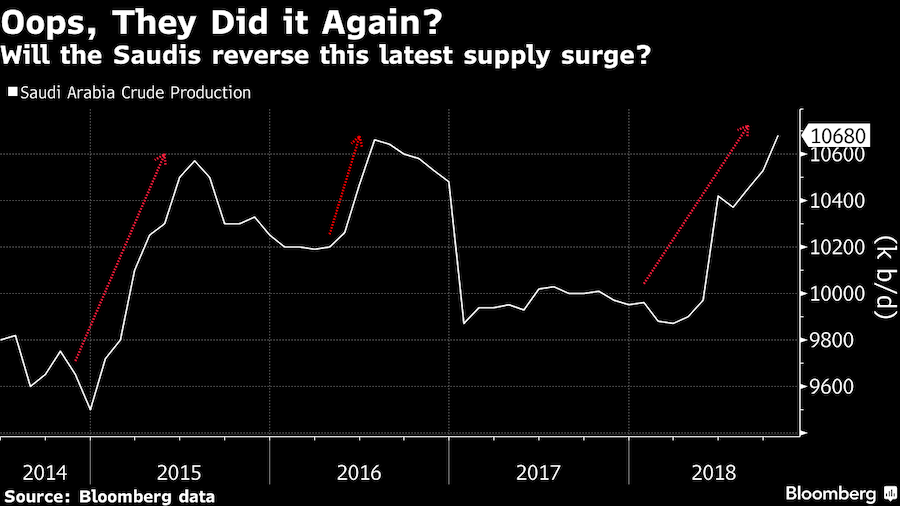
OPEC and its allies gathered for a meeting in Abu Dhabi amid signs that they’ll consider cutting production next year.
A technical committee representing the coalition projected on Saturday a global oil surplus will resurface in 2019 if they continue to produce at current rates, according to delegates familiar with its conclusions.
Nonetheless, Saudi Arabia’s Energy Minister — representing OPEC’s biggest member — said ahead of Sunday’s meeting between the Organization of Petroleum Exporting Countries and its allies in Abu Dhabi that it was “too premature” to discuss output cuts.
At least three countries which are members of the Joint Ministerial Monitoring Committee consider that it’s necessary to discuss the possibility of output cuts in 2019, according to delegates. Russia isn’t ready to reveal its position on whether the group should reduce output further before the meeting on Sunday, according to a person familiar with the matter.
Al-Falih agreed earlier in a meeting in Baghdad on joint coordination with Iraq to achieve more stability in the oil market, Iraqi Oil Ministry spokesman Asim Jihad said by phone. The kingdom’s energy minister flew into Baghdad for a meeting with Iraqi Prime Minister Adel Abdul Mahdi.
Al-Falih flew to Abu Dhabi for talks with OPEC and other producers on Sunday. Iraq, the cartel’s second biggest producer after Saudi Arabia, has largely rebuilt its energy industry after decades of conflict and sanctions, and has announced ambitious plans to keep expanding its output capacity.

OPEC and its allies meet under mounting pressure to consider renewed production cuts after a slump in oil prices. Crude on both sides of the Atlantic tumbled Friday as the U.S. reported rising stocks and Washington granted waivers that lessen the impact of sanctions on Iranian exports. Brent plunged below $70 a barrel for the first time in six months, shedding 4 percent last week. WTI futures also tumbled, losing around 5%.
The OPEC+ Joint Technical Committee, which met for talks ahead of Sunday’s meeting, has given a preliminary 104 percent compliance rate to its cuts deal in October, according to a delegate. The producers’ group implemented about 111% of its pledged cuts in September and has agreed to boost supply by restoring 100% compliance.
The International Energy Agency has repeatedly called for OPEC to open the taps to ensure global demand for crude is met. IEA Executive Director Fatih Birol has spoken of the market entering “ a red zone” if output losses from Venezuela and exports from Iran are not offset.
The producer group and its allies have been rapidly ramping up output since May, responding to political pressure from U.S. President Donald Trump and offsetting supply losses from Iran and Venezuela. Now, they’re considering a U-turn.
Sudden Reversal
In the U.S., crude production increased to a record 11.6 million barrels a day last week and stockpiles rose by 5.8 million barrels, according to the Energy Information Administration. OPEC’s own output in October reached the highest level since 2016, while Russia last month pumped 11.4 million barrels a day, a post-Soviet record.
On top of the danger of overproduction, there’s also the risk to demand from faltering emerging-market economies and a trade war between the U.S. and China.
If the group does ultimately decide fresh cutbacks are necessary, it would mark its second production U-turn this year. For Saudi Arabia — the world’s biggest crude exporter — it would be the third time in recent years that the kingdom has delivered a supply surge only to quickly reverse it.
First, there are a number of challenges to resolve. The Saudis will need to once again secure the support of rival-turned-partner Russia, which has less need for high oil prices. There’s also the risk of antagonizing Trump, who has repeatedly accused the group of inflating prices.
(Reporting by Grant Smith, Mohammed Aly Sergie and Elena Mazneva).